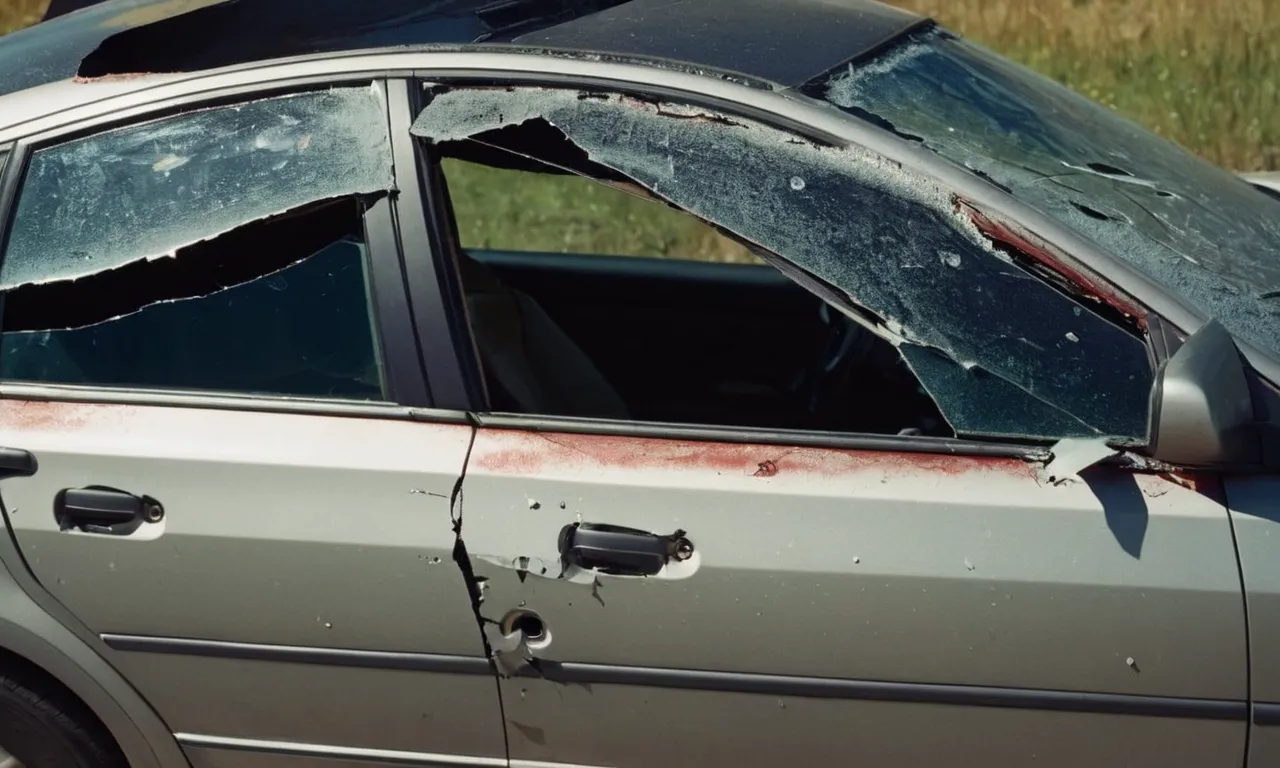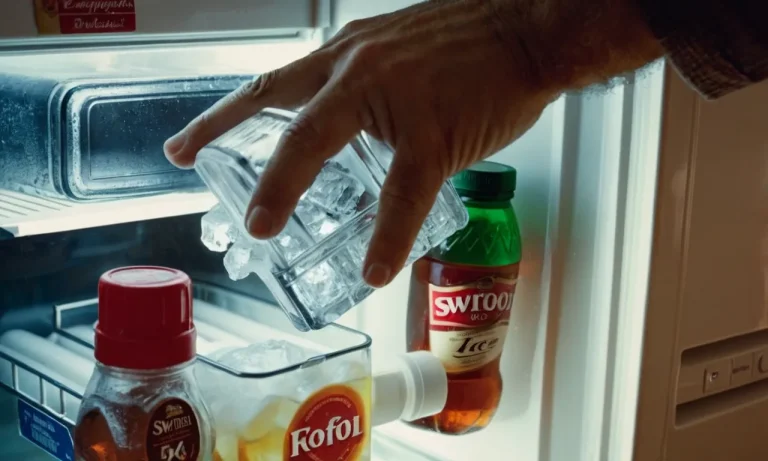What To Do If Someone Hits Your Parked Car And Leaves
Finding damage on your parked car with no note left behind is frustrating. You’re likely wondering what steps to take next and who will cover the repair costs. Don’t worry, you have options in this situation.
If you’re short on time, here’s a quick answer to your question: File a claim with your insurance company or the other driver’s if you have their details. You can also file a police report to document the incident.
In this comprehensive guide, we’ll walk through all the steps you should take after discovering your parked car was hit, from collecting evidence to figuring out how to get your car fixed.
Document the Damage Thoroughly
Being a victim of a hit-and-run incident can be frustrating, but it’s important to stay calm and take the necessary steps to protect yourself. One of the first things you should do is document the damage to your parked car thoroughly.
This will help you when filing an insurance claim and possibly identifying the person responsible for the accident.
Take photos from all angles
Grab your smartphone or camera and start taking photos of your car from all angles. Make sure to capture the entire vehicle, including the area where the damage occurred. Focus on the specific areas that have been affected, such as the doors, bumpers, or side panels.
Taking detailed photos will provide visual evidence of the damage.
Note dents, scratches, and other damage
While taking photos, make sure to note any dents, scratches, or other visible damage to your car. This will help you provide accurate information to your insurance company and assist in estimating the cost of repairs.
Take close-up shots of any dents or scratches to clearly show the extent of the damage.
Look for paint transfer that could help identify the other vehicle
Inspect your car for any paint transfer from the other vehicle involved in the accident. This could provide crucial information to help identify the responsible party. If you find any paint from the other vehicle, make sure to document it with photos and take note of the color and location of the transfer.
Remember, documenting the damage thoroughly is essential for a successful insurance claim and potentially identifying the person who hit your parked car. It’s always a good idea to contact your insurance company as soon as possible to report the incident and provide them with the documentation you have gathered.
File a Police Report
If you return to your parked car only to find it has been hit and the responsible driver has fled the scene, it can be a frustrating and stressful situation. However, one of the first steps you should take is to file a police report.
Reporting the incident to the police is important for several reasons:
1. Documentation:
Filing a police report provides you with an official document that verifies the incident occurred. This documentation can be crucial when dealing with insurance companies or if you need to take legal action.
The report will include important details such as the date, time, and location of the incident, as well as any witness statements or evidence collected at the scene.
2. Insurance Purposes:
When it comes to filing a claim with your insurance company, having a police report can strengthen your case. Insurance companies often rely on police reports to determine fault and assess the extent of the damage.
Without a report, it may be more difficult to prove that the accident occurred or to receive proper compensation for repairs.
3. Hit-and-Run Investigations:
By filing a police report, you are helping authorities investigate the hit-and-run incident. They can use the information provided to search for the responsible driver and potentially hold them accountable for their actions.
Even if the chances of finding the driver are slim, reporting the incident can still contribute to overall hit-and-run statistics and help raise awareness about this issue.
Remember, when filing a police report, be prepared to provide as much information as possible. This includes the make, model, and license plate number of the vehicle that hit your car, along with any other details you may have observed.
The more information you can provide, the better chances authorities have in locating the responsible driver.
It’s important to note that the process of filing a police report may vary depending on your location. Some police departments may require you to visit the station in person, while others may allow you to file a report online or over the phone.
Check with your local police department for specific instructions on how to file a report in your area.
For more information on what to do if someone hits your parked car and leaves, you can visit the Consumer Reports website.
Contact Your Insurance Company
If someone hits your parked car and leaves, the first step you should take is to contact your insurance company. It is important to notify them as soon as possible so they can guide you through the claims process and provide the necessary assistance.
Reach out to your insurance agent or call the company’s customer service hotline to report the incident.
Describe the damage and hit-and-run circumstances
When you speak to your insurance company, make sure to provide them with accurate and detailed information about the damage to your car and the circumstances of the hit-and-run incident. Describe the location where the incident occurred, the time it happened, and any witnesses who may have seen what happened.
This information will help your insurance company assess the situation and determine the next steps.
Ask if you have coverage for this type of claim
Check with your insurance company to see if you have coverage for hit-and-run incidents or damage caused by an unidentified driver. Some insurance policies may include provisions for these types of situations, while others may require additional coverage.
Your insurance agent can advise you on the specific coverage you have and what steps you need to take to file a claim.
Get estimate for repairs approved
Before you can proceed with getting your car repaired, you will need to have an estimate for the damages. Your insurance company may have preferred repair shops or recommend trusted professionals in your area.
It’s important to get the estimate approved by your insurance company before proceeding with the repairs to ensure that you will be reimbursed or have the repairs covered by your policy.
Remember, dealing with a hit-and-run incident can be frustrating and stressful, but by contacting your insurance company, providing accurate information, and following their guidance, you can navigate the process smoothly and get your car back on the road as soon as possible.
Check for Witnesses and Security Footage
Discovering that someone has hit your parked car and left can be incredibly frustrating. However, there are several steps you can take to increase your chances of identifying the responsible party. One of the first things you should do is check for witnesses and security footage.
Ask nearby businesses about security cameras
If your parked car was near a business or in a commercial area, it’s worth taking the time to inquire about security cameras. Many businesses have surveillance systems in place to deter theft and vandalism. Approach the business owner or manager and politely explain the situation.
They may be able to provide you with valuable footage that could help identify the person who hit your car.
Pro tip: If the business has surveillance footage, ask if they can make a copy for you or provide you with the contact information of their security company.
Leave a note on windshields asking witnesses to contact you
Another strategy to consider is leaving a note on the windshields of nearby cars. Politely explain what happened and ask anyone who witnessed the incident to contact you. Leave your name, phone number, and email address so that potential witnesses can easily reach out to you.
While this method may not always yield results, it’s worth a try, especially if there were people around at the time of the incident.
Pro tip: Make sure to mention that you are not accusing anyone, but simply seeking information that could help resolve the situation.
Search neighborhood apps like Nextdoor for reports
With the rise of neighborhood apps like Nextdoor, communities have become more connected than ever before. These platforms allow residents to communicate with one another, share information, and even report suspicious activities.
Take advantage of these apps and search for any reports or discussions related to car accidents or hit-and-runs in your area. Someone might have witnessed the incident or have valuable information to share.
Pro tip: Nextdoor also provides a feature called “Crime & Safety” where users can post about incidents and share relevant information. Check this section regularly to stay updated on any developments related to your case.
Remember, gathering evidence is crucial when someone hits your parked car and leaves the scene. By checking for witnesses and security footage, asking nearby businesses about surveillance cameras, leaving notes for potential witnesses, and searching neighborhood apps, you increase your chances of finding valuable information that can help identify the responsible party.
Find the Driver Yourself
If you return to your parked car only to find that someone has hit it and left without leaving any contact information, it can be frustrating and disheartening. However, there are steps you can take to try and find the driver responsible for the damage.
One option is to take matters into your own hands and search for the driver yourself.
Lookup similar damage at body shops
One way to potentially find the driver is to visit local body shops and inquire about any recent repairs that match the damage on your car. Body shop technicians may have seen similar damage and could remember working on a vehicle with the same characteristics.
This could provide you with valuable information about the driver or their insurance company.
Search online ads selling similar car parts
Another avenue to explore is searching online marketplaces or classified ads for individuals selling car parts that match the ones damaged on your vehicle. By reaching out to these sellers, you may be able to gather information about where they obtained the parts or potentially even identify the person responsible for the hit-and-run incident.
Report suspect plates to police
If you were able to get a glimpse of the vehicle that hit your car and managed to note down the license plate number, report it to the police. Law enforcement agencies have access to databases that can help them track down the registered owner of the vehicle.
Providing them with this information can greatly increase the chances of finding the driver responsible for the damage.
Remember, it’s important to approach this process with caution and avoid taking matters into your own hands. Leave the investigation work to the authorities and provide them with any information that could assist in their search.+
Pay Out of Pocket
If you find yourself in the unfortunate situation of having your parked car hit by someone who then flees the scene, it can feel frustrating and overwhelming. However, there are steps you can take to address the damage and minimize the financial impact.
One option is to pay for the repairs out of pocket.
Get a detailed repair estimate
The first step in deciding whether to pay out of pocket is to obtain a detailed repair estimate. Take your vehicle to a reputable auto body shop and have them assess the damage. They will provide you with an estimate that outlines the necessary repairs and the associated costs.
Determine if repairs exceed deductible
After receiving the repair estimate, you should compare the cost of repairs to your insurance deductible. The deductible is the amount you are responsible for paying before your insurance coverage kicks in.
If the estimated cost of repairs is lower than your deductible, it may be more cost-effective to pay for the repairs out of pocket.
Use insurance payout if you have hit-and-run coverage
If you have hit-and-run coverage as part of your insurance policy, you may be eligible for an insurance payout to cover the damages. This coverage typically requires you to report the incident to the police within a certain timeframe and provide documentation of the incident.
If you have this coverage, it may be worth filing a claim with your insurance company to see if you are eligible for compensation.
It’s important to note that paying out of pocket for repairs may be a viable option in certain situations, but it is always recommended to consult with your insurance provider to fully understand your coverage and options.
Additionally, keep in mind that insurance rates may increase if you file a claim, so it’s worth considering the long-term financial impact before making a decision.
Take the Driver to Small Claims Court
File claim form and pay fee
If someone hits your parked car and leaves, taking the driver to small claims court may be a necessary step to seek compensation for the damages. To initiate this process, you will need to file a claim form with the small claims court in your jurisdiction.
The form can usually be obtained online or at the courthouse, and there may be a small fee associated with filing the claim. It’s important to note that each jurisdiction may have its own specific requirements and procedures, so it’s advisable to consult the local court’s website or seek legal advice if needed.
Notify defendant via certified mail
Once you have filed the claim form, the next step is to notify the defendant, the person who hit your car, about the lawsuit. One way to do this is by sending a notification letter via certified mail. This provides proof that the defendant received the letter, which is essential for legal purposes.
In the letter, clearly state the details of the incident, the damages incurred, and the amount of compensation you are seeking. Be sure to include a deadline for the defendant to respond, typically within a certain number of days.
Gather evidence like photos and repair bill
Before heading to court, it’s important to gather evidence to support your claim. This can include photographs of the damage to your car, any witness statements, and the repair bill or estimates for the cost of repairs.
These pieces of evidence will help establish the extent of the damage and the amount of compensation you are seeking. Make sure to keep all relevant documents organized and easily accessible. Additionally, it can be helpful to document any conversations or interactions you have had with the defendant or their insurance company throughout the process.
Conclusion
Discovering damage on your parked car with no note left behind is frustrating. But don’t worry, you have options. Thoroughly document the damage, file a police report, and contact your insurance company about coverage for hit-and-run claims.
You can also try tracking down the driver yourself through investigative work. As a last resort, you may need to pay out of pocket if repairs don’t exceed your deductible. We hope this guide gave you a clear outline of the steps to take after an hit-and-run on your parked car.







